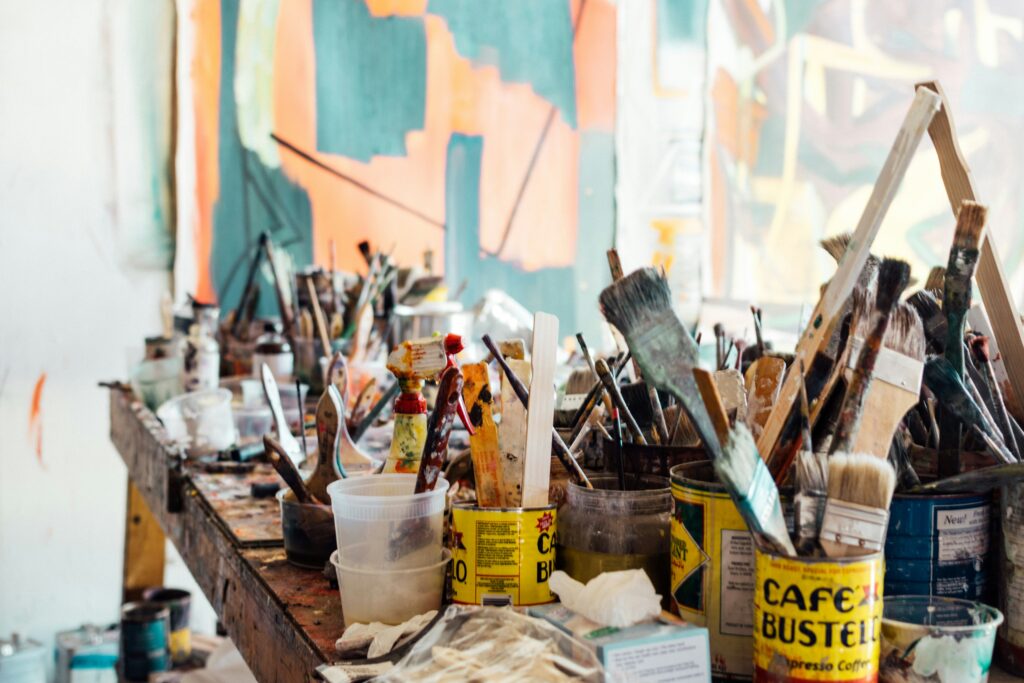The Whitney Biennial, New York’s renowned exhibition of new American art, is set to open its 81st edition. The exhibition is known for sparking debates and discussions within the art community and beyond. With a mix of young talents and established practitioners, the Biennial presents a diverse range of perspectives. In this article, three critics provide their individual assessments of the exhibition, highlighting both its strengths and weaknesses. As the art world navigates an era without a singular avant-garde movement, the curators of the Biennial aim to offer a cross-section of contemporary American art, showcasing 44 artists and collectives across various mediums. While the Biennial may not be a comprehensive reflection of the state of art in the United States, it offers viewers a curated point of view on the current artistic landscape.

Introduction
The Whitney Biennial, a prominent showcase of new American art, has long been a subject of debate and discussion within the art community. As the 81st edition of the Biennial opens, it presents a “dissonant chorus” of young talents and veteran practitioners, sparking conversations about the state of contemporary art in the United States. This comprehensive article will delve into the purpose of the Whitney Biennial, the curators and their vision, the selected artists and their works, the relevance of the Biennial in 2024, critics’ opinions and reviews, and the impact on the contemporary art scene.
Overview of the Whitney Biennial
The Whitney Biennial is a recurring exhibition organized by the Whitney Museum of American Art in New York City. It serves as a platform to showcase emerging and established artists working in a variety of mediums, including painting, sculpture, photography, film, and performance art. Since its inception in 1932, the Biennial has become a significant event in the art world, often shaping the discourse around American art and influencing future trends.

The Purpose of the Whitney Biennial
The purpose of the Whitney Biennial is multi-faceted. Firstly, it aims to provide a snapshot of contemporary American art, reflecting the diversity and richness of artistic practices in the country. By including both emerging and established artists, the Biennial seeks to support and promote a wide range of voices and perspectives.
Additionally, the Biennial serves as a platform for artists to gain recognition and exposure. Being selected for the Whitney Biennial can significantly impact an artist’s career, leading to increased visibility, sales, and critical acclaim. The exhibition provides a unique opportunity for artists to showcase their work to a broad audience of art professionals, collectors, and enthusiasts.
Furthermore, the Biennial serves as a cultural barometer, reflecting the social, political, and cultural climate of the United States. Each edition of the Biennial is influenced by the prevailing issues and concerns of its time, offering a platform for artists to engage with and respond to contemporary issues through their work.
The Debate Surrounding the Whitney Biennial
The Whitney Biennial has always been a subject of debate and controversy. As a high-profile exhibition, it attracts attention from critics, curators, artists, and the general public, all of whom hold diverse opinions on the selection of artists and the curatorial vision.
One recurring debate revolves around the inclusivity and representation of artists in the Biennial. Critics argue that the exhibition often overlooks artists from marginalized communities, perpetuating a lack of diversity in the art world. In response, the Whitney Museum has made efforts in recent years to increase representation and acknowledge the need for a more inclusive selection process.
Another point of contention is the curatorial approach and the overall thematic coherence of the Biennial. Some argue that the exhibition lacks a clear and cohesive narrative, making it difficult for viewers to engage with the artworks and understand their relevance within the larger context. However, others appreciate the diversity and variety of artistic practices, viewing the lack of a singular theme as an opportunity for exploration and experimentation.

The Curators and Their Vision
The curators of the 2024 Whitney Biennial, Chrissie Iles and Meg Onli, play a crucial role in shaping the exhibition’s direction and narrative. With their backgrounds in contemporary art and curatorial expertise, they bring their unique perspectives and visions to the curation process.
Iles and Onli aimed to create a small-scale Biennial with a focused point of view. Unlike previous editions, which featured a larger number of artists, the 2024 Biennial includes only 44 artists and collectives. This deliberate choice allows for a more intimate and concentrated experience, enabling viewers to engage more deeply with each artist’s work.
The curators emphasize inclusivity and strive to represent a diverse range of artists, particularly those from marginalized communities. They actively sought out artists whose work addresses pressing social and political issues, amplifying voices that are often underrepresented or unheard in the art world.
Overall, Iles and Onli’s curatorial vision for the 2024 Whitney Biennial aims to create a platform for artists to explore and respond to the complexities of contemporary society, while also inviting viewers to reflect on their own experiences and perspectives.
The Selected Artists and their Works
The 2024 Whitney Biennial features a carefully selected group of artists whose works represent a wide range of mediums, themes, and artistic expressions. Each artist brings their unique perspective and artistic approach, contributing to the overall narrative of the exhibition.
Among the featured artists is Lotus L. Kang, whose work “In Cascades” utilizes long, broad sheets of exposed film that continue to evolve throughout the run of the Biennial due to the glare and humidity of the museum. This interactive and dynamic installation highlights the transient nature of art and challenges traditional notions of permanence and stability.
Diane Severin Nguyen’s film “In Her Time (Iris’s Version)” explores the struggles of a young actress in a fictional movie about the Nanjing Massacre. Through her work, Nguyen offers a powerful commentary on the intersection of history, memory, and identity, prompting viewers to question the ways in which the past continues to shape the present.
These are just two examples among the diverse group of artists and their works featured in the Biennial. Each artist contributes their own unique perspective and artistic language, creating a thought-provoking and visually captivating exhibition.
The Relevance of the Biennial in 2024
In the rapidly evolving landscape of contemporary art, the Whitney Biennial continues to play a crucial role in shaping the discourse and trends of American art. The 2024 edition holds particular significance as it reflects the current social, political, and cultural climate of the United States.
In an era marked by uncertainty and diverse perspectives, the Biennial offers a platform for artists to explore complex issues and engage with pressing social concerns. Through their works, the selected artists provide valuable insights into the state of the nation and challenge viewers to question their own beliefs and assumptions.
Moreover, the Biennial acts as a barometer of emerging trends and artistic practices. It provides art professionals, collectors, and enthusiasts with an opportunity to discover new talent and engage with cutting-edge artistic expressions. The Biennial serves as a platform for experimentation, innovation, and the exploration of new ideas, thus shaping the future direction of American art.
Critics’ Opinions and Reviews
As with any major exhibition, the Whitney Biennial receives a range of opinions and reviews from art critics and commentators. While some critics applaud the curatorial vision and the selection of artists, others voice their concerns or offer constructive criticism.
Critics who appreciate the curatorial approach applaud Iles and Onli for their emphasis on inclusivity and representation. They praise the curation of diverse voices and perspectives, viewing it as a step towards a more inclusive and equitable art world. These critics highlight the exhibition’s ability to spark important conversations and challenge prevailing norms and structures.
However, there are also critics who express reservations about the exhibition, particularly regarding its thematic coherence and overall impact. They argue that the Biennial lacks a clear narrative or central theme, making it challenging for viewers to navigate the exhibition and understand the artworks in relation to each other. These critics call for a stronger curatorial vision that integrates the works into a more cohesive and engaging experience.
Impact on the Contemporary Art Scene
The Whitney Biennial, with its historical significance and cultural influence, has a profound impact on the contemporary art scene. Being selected for the Biennial can have transformative effects on an artist’s career, opening doors to new opportunities and increasing their visibility within the art world.
The Biennial also plays a vital role in shaping artistic discourse and influencing future trends. It introduces emerging artists to a broader audience, allowing their work to be seen and acknowledged by art professionals, collectors, and curators who may play a significant role in their future success. By highlighting innovative and thought-provoking artworks, the Biennial pushes boundaries and encourages experimentation in contemporary art practices.
Furthermore, the controversies and debates surrounding the Biennial contribute to the ongoing dialogue within the art community. The exhibition’s ability to generate discussions and elicit diverse opinions reflects its relevance and impact on the contemporary art scene.
Conclusion
The Whitney Biennial continues to be a focal point for the American art world, sparking debates and conversations about the state of contemporary art. Through its carefully curated selection of artists and works, the Biennial reflects the diversity of artistic practices in the United States and engages with pressing social and political concerns.
The 2024 Biennial, curated by Chrissie Iles and Meg Onli, offers a platform for artists to explore complex issues and challenge prevailing norms. Their vision emphasizes inclusivity and representation, amplifying voices that have been historically marginalized in the art world.
While the Biennial is not without criticism, it remains a significant event that shapes the discourse and trends of American art. It provides artists with valuable exposure and opportunities while influencing the future direction of the contemporary art scene.
In conclusion, the Whitney Biennial serves as a crucial barometer of American art and culture, reflecting the complexities and diversity of the nation’s artistic practices. As it continues to evolve, the Biennial will undoubtedly play a vital role in shaping the future of art in the United States.

